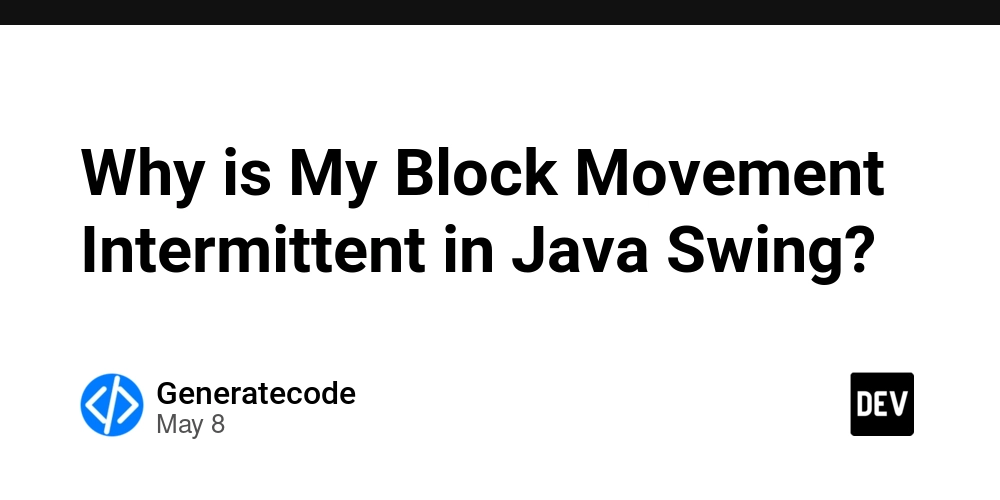How Git Uses SHA-1 for Commit History
How Git Uses SHA-1 for Commit History Unlocking the Internals of Git’s Immutable Architecture Git is more than just a version control system—it’s a cryptographic ledger that builds its commit history on top of SHA-1 hashing. This design enables immutability, traceability, and distributed consistency. Anatomy of a Git Commit Every Git commit is represented by a SHA-1 hash that encodes the entire state of the project at a point in time. git log --pretty=raw Output: commit 9fceb02b21337d3025f69e22f68c82d20a000000 tree 36b74b3b8f6a... parent cf23df2207d9... author John Doe committer John Doe Commit Object Breakdown Commit SHA-1: Fingerprint of the current state. Tree SHA-1: Represents the directory structure. Parent SHA-1: Links to prior commits (commit chaining). Metadata: Author, committer, and commit message. SHA-1 and Security Git’s SHA-1 hashing ensures collision resistance and referential integrity: A change in any object results in a new hash. Git defends against SHA-1 collisions using structural integrity checks. Git now supports SHA-256 (git init --object-format=sha256) for enhanced security. Use git fsck to validate object integrity: git fsck --full hash-object: Understanding the Core Command The git hash-object command is a plumbing-level tool to compute and optionally store a SHA-1 hash. Key Features: Operates independently of Git repositories. Deterministic: same input → same output. Supports write mode (-w) to persist objects. echo "Hello Git" | git hash-object --stdin # Output: 8cf2d8a03c123f8824ac46aa20a6b924ad44f0c8 Add the object to .git/objects: echo "Hello Git" | git hash-object -w --stdin Inside .git: Object-Oriented Versioning When git init is run, Git creates the .git/ directory as the project database. Structure: .git/ ├── HEAD ├── config ├── objects/ │ ├── info/ │ ├── pack/ │ └── [hashed objects] ├── refs/ ├── hooks/ ├── index The objects/ Directory Houses all blobs, trees, commits, and tags. Each object is stored as: Folder: First 2 characters of SHA-1 File: Remaining 38 characters Example: .git/objects/55/7db03de997c86a4a028e1ebd3a1ceb225be238 Example: Blob Object Storage and Retrieval echo "Hello Git Internals!" | git hash-object -w --stdin Retrieve it: git cat-file -p # Output: Hello Git Internals! Shortened hashes are valid as long as they’re unique: git cat-file -p 557db03 Git Object Format & Compression Internally, Git stores: \0 Example: blob 11\0Hello World blob: object type 11: size \0: null byte separator Git compresses this format using Zlib. Advanced: Building Commit History by Hand Step 1: Blob Storage echo "Hello World" | git hash-object -w --stdin Step 2: Tree & Commit Generation git add hello.txt git commit -m "First commit" Git creates: A blob for the file. A tree linking the blob. A commit referencing the tree. git log -1 # commit c7a78d3... Inspect: git cat-file -t c7a78d3 git cat-file -p c7a78d3 Annotated Tags Internals Create a tag: git tag -a v1.0 -m "First release" A tag is also an object: git cat-file -t # Output: tag git cat-file -p Tag Object Fields object: commit it points to type: always "commit" tag: name tagger: metadata message: tag message Final Thoughts Git’s commit model, built atop SHA-1 (and SHA-256), is a masterclass in content-addressable storage. Every file, directory, and history point is an immutable, verifiable object. Whether you’re debugging history, scripting Git automation, or studying internals—understanding the object model and SHA-1 plumbing is key to Git mastery. Want to go deeper? Clone Git itself and inspect its C source, or experiment with git plumbing commands in a sandbox repo. Follow me for more deep dives into Git, dev tools, and the low-level internals that power modern development.

How Git Uses SHA-1 for Commit History
Unlocking the Internals of Git’s Immutable Architecture
Git is more than just a version control system—it’s a cryptographic ledger that builds its commit history on top of SHA-1 hashing. This design enables immutability, traceability, and distributed consistency.
Anatomy of a Git Commit
Every Git commit is represented by a SHA-1 hash that encodes the entire state of the project at a point in time.
git log --pretty=raw
Output:
commit 9fceb02b21337d3025f69e22f68c82d20a000000
tree 36b74b3b8f6a...
parent cf23df2207d9...
author John Doe
committer John Doe
Commit Object Breakdown
- Commit SHA-1: Fingerprint of the current state.
- Tree SHA-1: Represents the directory structure.
- Parent SHA-1: Links to prior commits (commit chaining).
- Metadata: Author, committer, and commit message.
SHA-1 and Security
Git’s SHA-1 hashing ensures collision resistance and referential integrity:
- A change in any object results in a new hash.
- Git defends against SHA-1 collisions using structural integrity checks.
- Git now supports SHA-256 (
git init --object-format=sha256) for enhanced security.
Use git fsck to validate object integrity:
git fsck --full
hash-object: Understanding the Core Command
The git hash-object command is a plumbing-level tool to compute and optionally store a SHA-1 hash.
Key Features:
- Operates independently of Git repositories.
- Deterministic: same input → same output.
- Supports write mode (
-w) to persist objects.
echo "Hello Git" | git hash-object --stdin
# Output: 8cf2d8a03c123f8824ac46aa20a6b924ad44f0c8
Add the object to .git/objects:
echo "Hello Git" | git hash-object -w --stdin
Inside .git: Object-Oriented Versioning
When git init is run, Git creates the .git/ directory as the project database.
Structure:
.git/
├── HEAD
├── config
├── objects/
│ ├── info/
│ ├── pack/
│ └── [hashed objects]
├── refs/
├── hooks/
├── index
The objects/ Directory
- Houses all blobs, trees, commits, and tags.
- Each object is stored as:
- Folder: First 2 characters of SHA-1
- File: Remaining 38 characters
Example:
.git/objects/55/7db03de997c86a4a028e1ebd3a1ceb225be238
Example: Blob Object Storage and Retrieval
echo "Hello Git Internals!" | git hash-object -w --stdin
Retrieve it:
git cat-file -p <hash>
# Output: Hello Git Internals!
Shortened hashes are valid as long as they’re unique:
git cat-file -p 557db03
Git Object Format & Compression
Internally, Git stores:
\0
Example:
blob 11\0Hello World
-
blob: object type -
11: size -
\0: null byte separator
Git compresses this format using Zlib.
Advanced: Building Commit History by Hand
Step 1: Blob Storage
echo "Hello World" | git hash-object -w --stdin
Step 2: Tree & Commit Generation
git add hello.txt
git commit -m "First commit"
Git creates:
- A blob for the file.
- A tree linking the blob.
- A commit referencing the tree.
git log -1
# commit c7a78d3...
Inspect:
git cat-file -t c7a78d3
git cat-file -p c7a78d3
Annotated Tags Internals
Create a tag:
git tag -a v1.0 -m "First release"
A tag is also an object:
git cat-file -t # Output: tag
git cat-file -p
Tag Object Fields
-
object: commit it points to -
type: always "commit" -
tag: name -
tagger: metadata -
message: tag message
Final Thoughts
Git’s commit model, built atop SHA-1 (and SHA-256), is a masterclass in content-addressable storage. Every file, directory, and history point is an immutable, verifiable object.
Whether you’re debugging history, scripting Git automation, or studying internals—understanding the object model and SHA-1 plumbing is key to Git mastery.
Want to go deeper? Clone Git itself and inspect its C source, or experiment with git plumbing commands in a sandbox repo.
Follow me for more deep dives into Git, dev tools, and the low-level internals that power modern development.









































































































































































![[The AI Show Episode 146]: Rise of “AI-First” Companies, AI Job Disruption, GPT-4o Update Gets Rolled Back, How Big Consulting Firms Use AI, and Meta AI App](https://www.marketingaiinstitute.com/hubfs/ep%20146%20cover.png)


























































































































![[DEALS] The Premium Python Programming PCEP Certification Prep Bundle (67% off) & Other Deals Up To 98% Off – Offers End Soon!](https://www.javacodegeeks.com/wp-content/uploads/2012/12/jcg-logo.jpg)














































































































































_Aleksey_Funtap_Alamy.jpg?width=1280&auto=webp&quality=80&disable=upscale#)
_Sergey_Tarasov_Alamy.jpg?width=1280&auto=webp&quality=80&disable=upscale#)











































































































![Apple Foldable iPhone to Feature New Display Tech, 19% Thinner Panel [Rumor]](https://www.iclarified.com/images/news/97271/97271/97271-640.jpg)
![Apple Developing New Chips for Smart Glasses, Macs, AI Servers [Report]](https://www.iclarified.com/images/news/97269/97269/97269-640.jpg)
![Apple Shares New Mother's Day Ad: 'A Gift for Mom' [Video]](https://www.iclarified.com/images/news/97267/97267/97267-640.jpg)
![Apple Shares Official Trailer for 'Stick' Starring Owen Wilson [Video]](https://www.iclarified.com/images/news/97264/97264/97264-640.jpg)




































































































![[Boost] Agentica, Every TypeScript Developer is an AI Developer (AI function calling framework)](https://media2.dev.to/dynamic/image/width=800%2Cheight=%2Cfit=scale-down%2Cgravity=auto%2Cformat=auto/https%3A%2F%2Fdev-to-uploads.s3.amazonaws.com%2Fuploads%2Fuser%2Fprofile_image%2F901175%2Fd1a551cd-f5ae-4d4f-8dea-e5edec30b8d1.jpeg)


